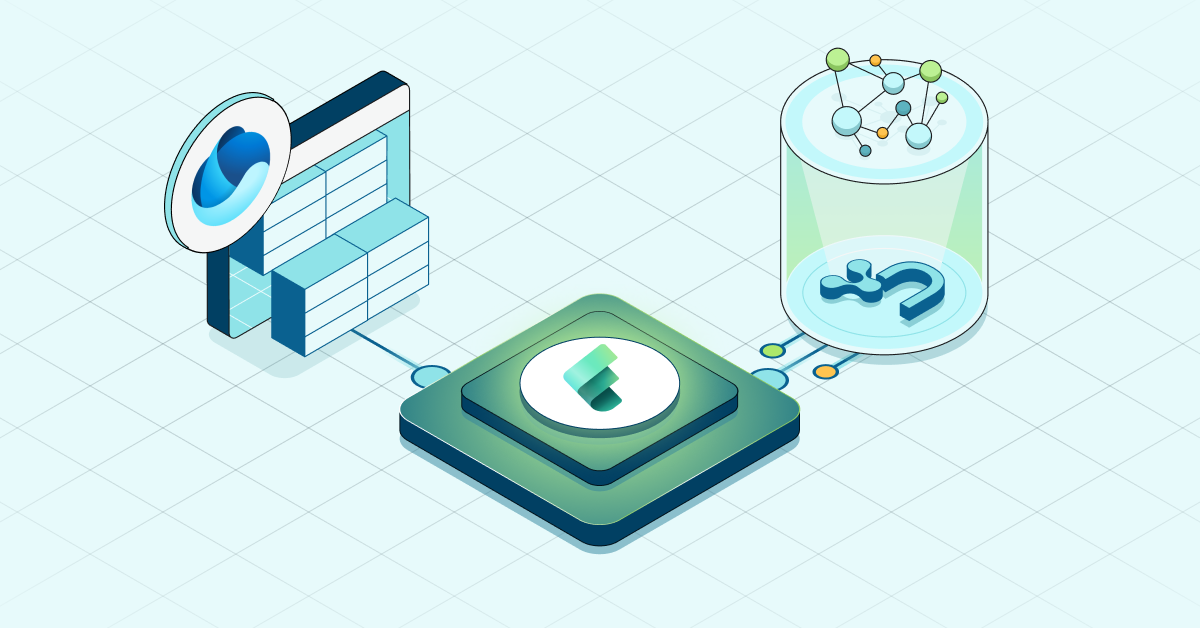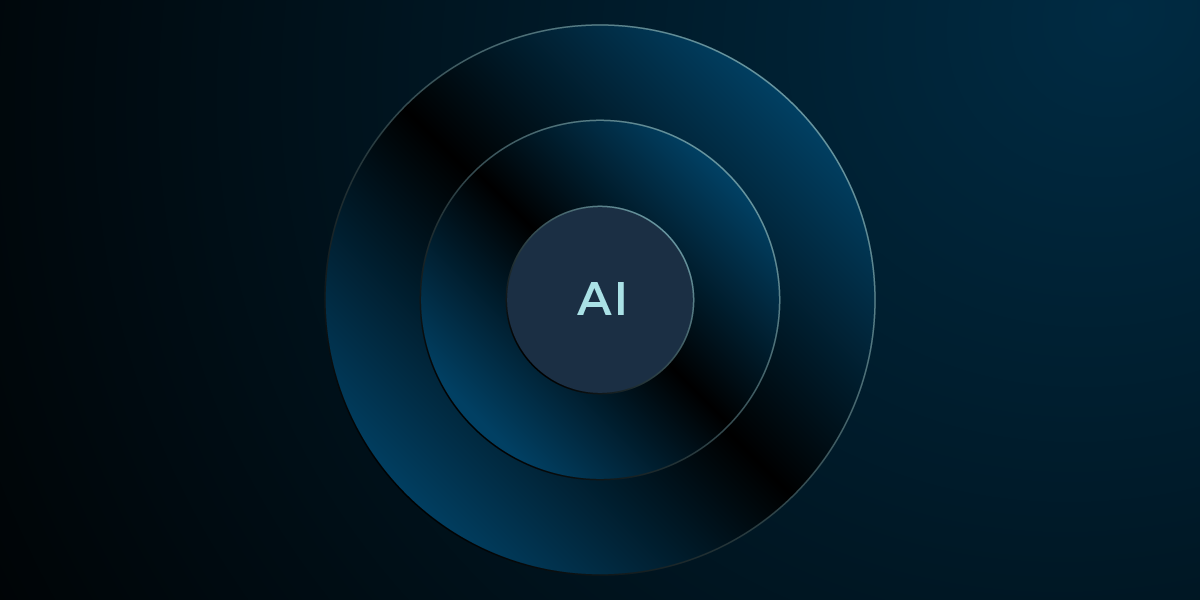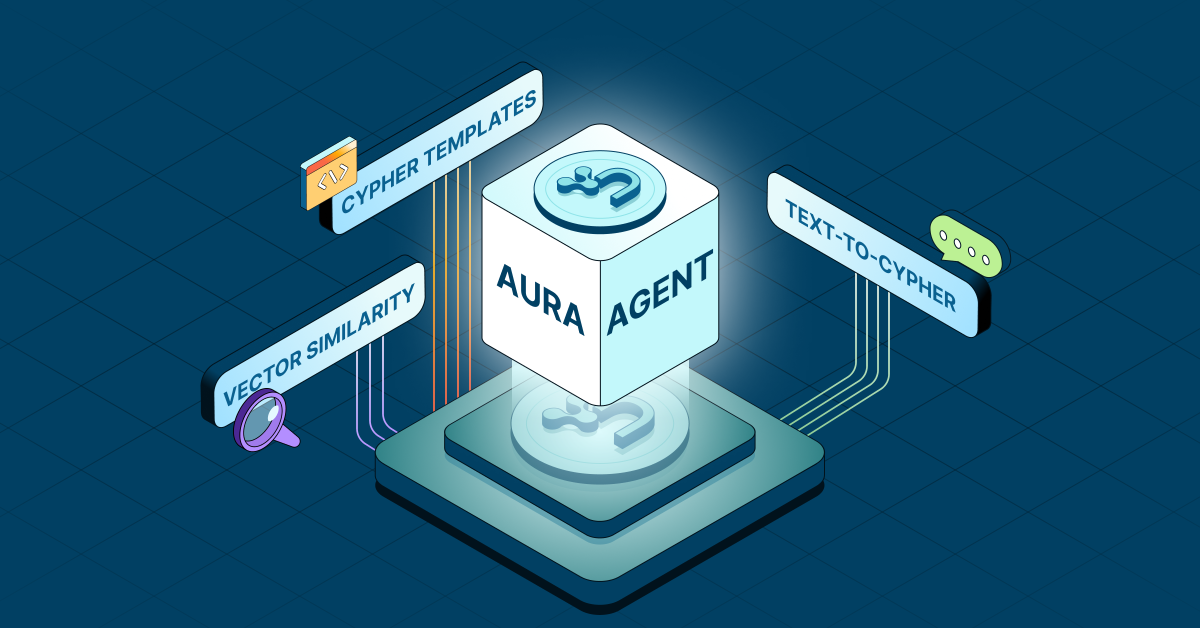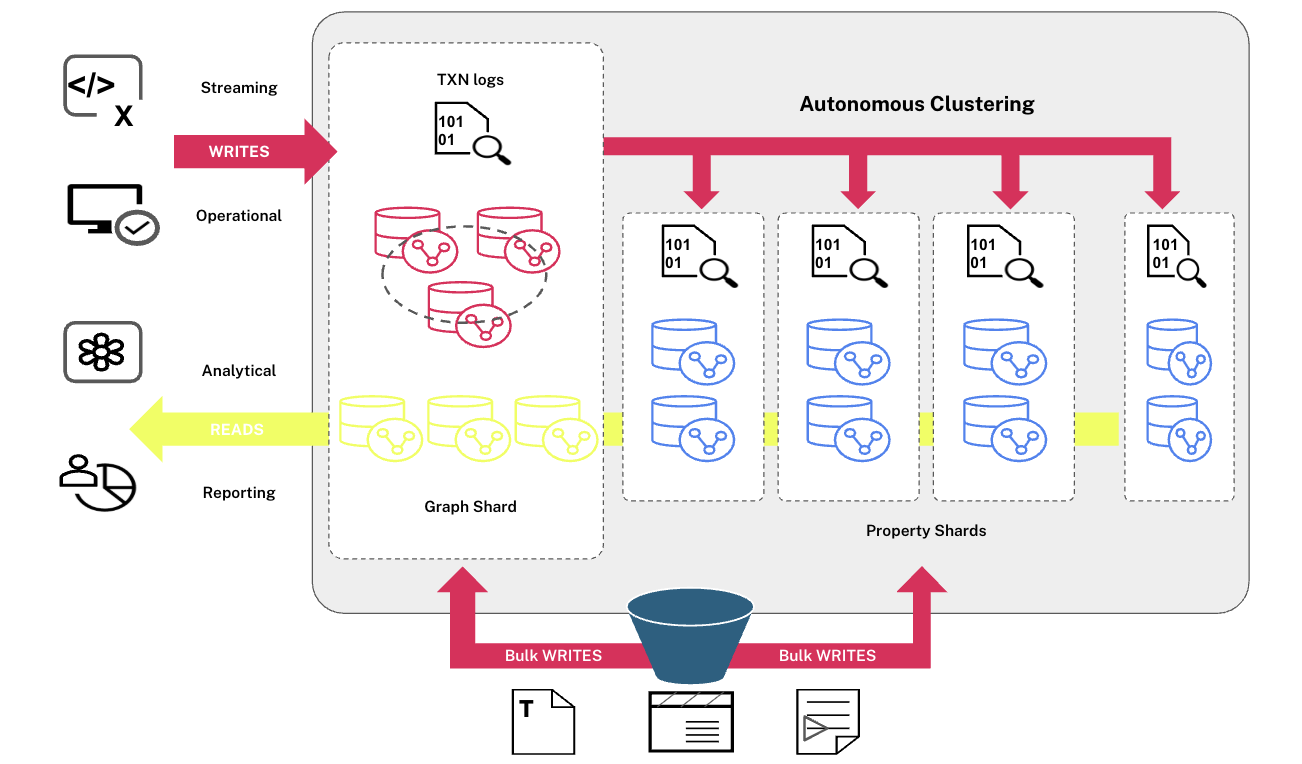Introducing Neo4j 4.3: The Fastest Path to Graph Productivity

Senior Director of Product Marketing
5 min read

I feel particularly thrilled to announce the GA release of Neo4j Graph Database 4.3.
Neo4j 4.3 is the latest and greatest update to Neo4j, the leading graph database for deployment in any production environment – on-premises, hybrid, or in the cloud. Building on the most trusted, scalable, secure database for performance and data integrity, Neo4j 4.3 delivers significant enhancements to performance, scalability, security, operability, cloud scale, and developer experience. It’s open source, and the source code is now available on GitHub.
Some product releases break new ground, others are more about sowing and reaping, incrementally realizing the benefits of previous innovations while preparing for further gains. Approximately a year and half ago, Neo4j released Neo4j 4.0 – a landmark development in graph technology – further extending the world’s leading graph database.
Neo4j 4.3 takes the emergence of the graph database one-notch further into the mainstream of enterprise technology – a true high-performance, distributed, multi-database, multi-use system, able to provide the assurances that enterprises demand on security and scalability, while (further) delighting developers with a reactive API and close integration with developer ecosystems.
Let’s look into key enhancements made to Neo4j 4.3 in detail, and learn why this is such a crucial release for customers and developers.
Improved Performance
Neo4j delivers consistent, real-time transaction throughput for multi-hop queries on large, interconnected datasets. With Neo4j 4.3 we have introduced the following two features:
Smart IO Scheduling
Faster Startup Times and Improved TCO
With Smart IO scheduling, Neo4j makes efficient use of available IO resources, and switches priority between background tasks – like checkpointing and page cache warmup – and foreground tasks, like processing new transactions to achieve faster startup times. Businesses can now achieve greater performance with the same resources, such as CPU/Memory/IO. This improves scalability, predictability, and performance, reducing the Total Cost of Ownership (TCO).
Relationship and Relationship Property Indexes
Fast, Scalable Relationship Query Performance
A highly requested feature over the years by the community that we’re happy to finally introduce: Relationship type lookup indexes and relationship property indexes. These offer up new modeling possibilities, and can significantly speed up many kinds of queries, by making it possible to index relationship types and properties.
We’ve also made the default label scan index optional. This behind-the-scenes index (introduced in the Neo4j 2.x series) is automatically built and maintained in every Neo4j graph, speeding queries that specify high-selectivity labels. You can now choose to disable this index. This is beneficial in certain write-intensive applications. The default is “on.”
Graph-Native Scale
Neo4j’s high-performance distributed cluster architecture scales with your data and your business needs in real-world situations, minimizing cost and hardware while maximizing performance across connected datasets. Now you can achieve robust transactional guarantee, performance across billions of nodes, trillions of relationships, with millisecond latency, and unlimited elasticity.
With Neo4j 4.3, we are introducing enhancements that enable reliably fast transactions with ultra-high parallelized throughput, namely:
Relationship Chain Locking for Faster Write Transaction Throughput
Faster Transaction Throughput
Relationship Chain Locks provide fine-grained locking so that relationships and nodes can be created/updated/deleted concurrently without causing contention – even when nodes have tens or millions of adjacent relationships. This means you can now achieve faster transaction throughput, and faster data import.
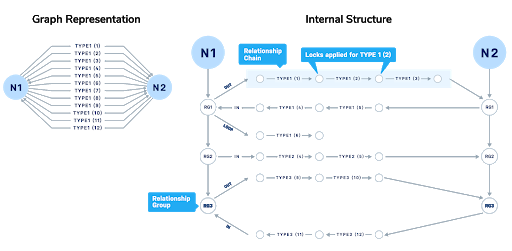
Graph Data Science and Analytic Read Scaling
Scale-Out Capacity for Read-Intensive Analytical Workloads
Graph Data Science users now have the option of adding one or more read replicas for analytic or visualization purposes, or as a warm backup for standby availability. This can be particularly helpful in larger multi-user GDS environments.
This new option uses a new clustering option in Neo4j 4.3. This offers up a new “single active and multi passive” topology that is similar to traditional replicated DBMSs. With this topology, writes are immediately cascaded asynchronously to one or more read replica(s). This capability offers value in certain environments, including analytic-intensive environments, and environments with an extremely high update and read rates, with lower SLAs for fault tolerance.
Increased Operational Flexibility
Businesses today are pushing for transformational outcomes at speed, and the demand for increasingly scalable, capable backup and recovery solutions has never been greater. With Neo4j 4.3, we’ve made SLAs and backup and recovery time faster, and integrations tighter with the introduction of:
Parallelized Backup and Restore for Faster Backup and Recovery
Improved SLAs with Faster Backup and Recovery Times
Now you can initiate backups at any point in time, any time of the day, without worrying about the transaction load impacting the completion of the backup job. With Neo4j 4.3, store copies and recoveries have been parallelized for ultra-fast backup and recovery – improving SLAs further. A new option for the timestamp of the backup snapshot to use the backup initiation time – rather than the backup end time – further improves performance and operational predictability.
Also, the logging framework of Neo4j now integrates with third-party products for robust observability.
Cloud Scalability
Neo4j offers flexible solutions and deployment models to support your cloud journey. Run Neo4j anywhere, supporting your hybrid, private cloud, lift and shift, or cloud-native environment needs.
With Neo4j 4.3, we are making application development, deployment, and DevOps even simpler with the release of features like:
Kubernetes Integration and Helm Charts
Build, Deploy, and Observe
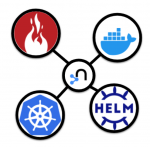
Deploying and running on Kubernetes is becoming easier with supported Helm Charts (coming soon). Today, without the helm charts, you need to create your own operator to orchestrate the deployment of Neo4j – which may take a considerable amount of time to create and set up. Helm Charts for single-server deployments will be available shortly after GA, with Helm Charts for clusters available later this year. Also, observability of Neo4j through Prometheus has been enhanced with additional metrics.
Simplified Networking with Server-Side Routing
Additional Networking Strategies for Cloud-Based Applications
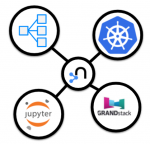
Server-side routing, together with user-defaulted home databases and graphs, makes it easier to get users and client applications to the right graph database in private and public networks – whether using load balancers, orchestration platforms like Kubernetes, application stacks like GRANDstack, client tools like Bloom and Browser, or data scientists connecting with Jupyter Notebooks.
Security Improvements
Built for the graph, Neo4j includes enterprise-grade database security that guarantees transactions with zero data loss. Neo4j has the security features enterprises demand: LDAP/Directory services integration, security logging, and encryption.
With 4.3 we are introducing three new enhanced security features:
- Extended role-based access controls (RBACs)
- Security logs now capture user and application login attempts
- Sensitive data obfuscation can be applied to all logs
Better Developer Experience
Neo4j empowers developers by providing them with full control over how their applications interact with the database. This includes robust data pipelines, streaming data, machine learning, and more.
Neo4j’s message-driven reactive architecture delivers maximum scalability and performance. With Neo4j 4.3, we are further reducing query time for complex, long-running queries and enriching developer capabilities with improvements like:
- Faster queries for ORDER BY and LIMIT with planner improvements
- Faster queries in Neo4j Enterprise with more query coverage by the Enterprise (Pipelined) Runtime
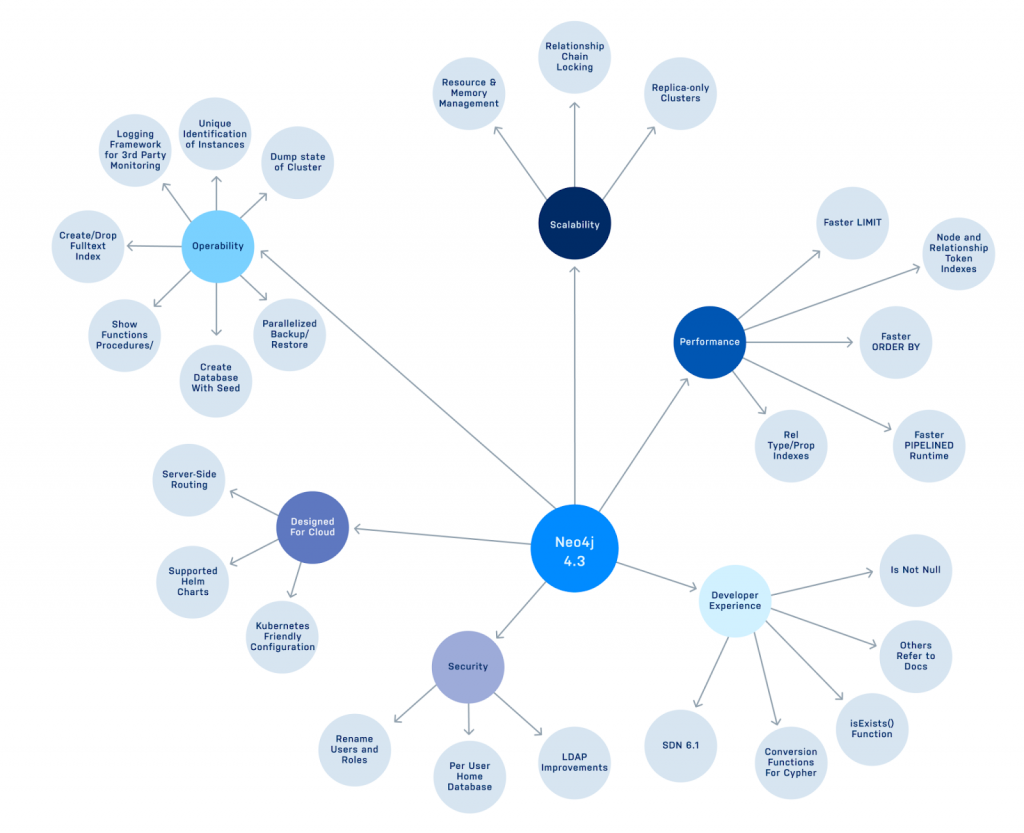
Get Started Today
Watch the webinar Introducing Neo4j 4.3: The Fastest Path to Graph Productivity to see the demo of exploring what’s new and download Neo4j 4.3 now.



